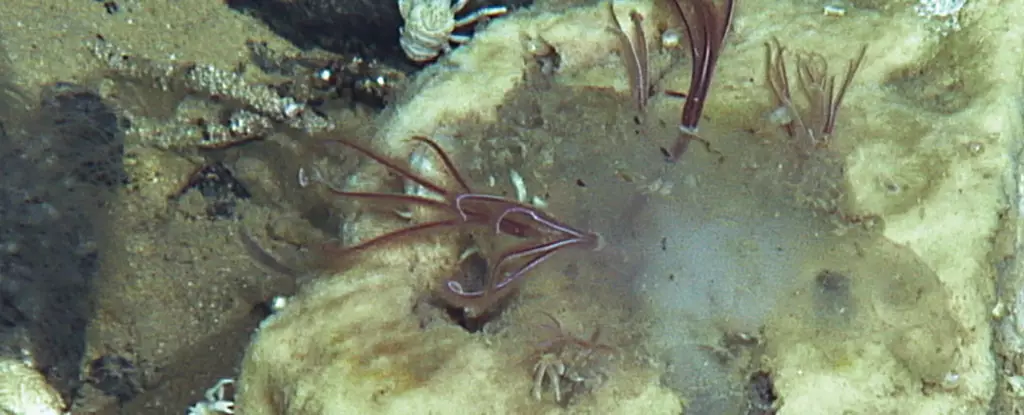The discovery of ancient bone-eating worms spanning back to the Cretaceous period shatters the comforting illusion that evolution is a linear progression of change and adaptation. Instead, it reveals a stubborn resilience—a creature lineage that has persisted relatively unchanged for over 100 million years. This finding underscores how stubborn some biological traits are when they confer survival advantages, challenging the often romanticized view of constant transformation.
In a world increasingly characterized by rapid change, the unyielding presence of these worms highlights a sobering truth: evolution is not always about progress but sometimes about persistence. These worms have maintained their niche, their biological machinery unchanged, surviving mass extinctions and shifting ecosystems while many other species have vanished. It’s a stark reminder that some forms of life are equipped with an almost invulnerable resilience, embodying conservatism within the evolutionary process.
The Deeper Significance of Deep-Time Adaptation
This fossil discovery invites us to reconsider what constitutes successful adaptation. Modern Osedax species, also known as bone-eating worms, are often seen as peculiar but effective specialists — feasting on whale bones in the deep ocean. Their ancient relatives, identified through meticulous fossil analysis, suggest that this dietary specialization is a remarkably successful evolutionary trait, dating back to a period predating modern marine mammals.
Rather than representing a fleeting anomaly, this lineage’s endurance hints at a biological strategy finely tuned to a particular ecological niche—one that has proven so advantageous that it remains largely unchanged despite the sweeping upheavals of Earth’s history. From an optimistic perspective, this durability demonstrates how specialization can confer stability and success, even in the face of Earth’s catastrophic episodes. Yet, there’s also a tinge of pessimism: these worms exemplify how certain biological traits, once advantageous, can become static relics, resistant to the kind of transformative waves that shape entire ecosystems.
Implications for Our Understanding of Extinction and Climate Change
Recognizing that such organisms have persisted for over a hundred million years forces us to reevaluate assumptions about vulnerability and extinction. It’s tempting to think that with the accelerating pace of climate change, many species will inevitably fade away. But the deep history of these worms suggests that some lineages may endure despite environmental upheaval—without significant change.
However, this endurance comes with a cautionary note. The fossil record offers no guarantee that all lineages will survive the turbulent future ahead. The resilience of ancient worms might be more a testament to their narrow ecological niche rather than overall adaptability, which could make them equally vulnerable to sudden changes like ocean acidification or temperature spikes. Their history compels us to ask: are we underestimating the resilience of specialized species, or are we simply underestimating the fragility that lies beneath apparent stability?
The Power and Pitfalls of Studying Ancient Organisms
The use of advanced imaging technology such as CT scans to examine delicate fossils exemplifies how modern science can pierce the veil of deep time without damaging irreplaceable specimens. Yet, even as these tools deepen our understanding, they also expose the limitations of our knowledge. The identification of new ichnospecies based solely on trace fossils highlights a profound truth: much of Earth’s biological history remains hidden or misunderstood, waiting for innovative methods to bring it into view.
Critically, projecting evolutionary stability onto modern species based on ancient traces involves assumptions. While similarities between ancient and current worms are striking, the lack of direct body fossils means there’s a risk of overgeneralizing or misinterpreting how these organisms evolved and adapted. The reliance on trace fossils, though invaluable, leaves gaps that could distort our perception of their true evolutionary story.
A Reflection on Humanity’s Place in Nature’s Long History
Finally, the revelation that some species have endured unchanged for more than a century of Earth’s turbulent history should serve as an unsettling mirror for human arrogance. In our relentless pursuit of progress, we often overlook the tenacity of these seemingly insignificant organisms. They are silent witnesses to Earth’s capacity for enduring change—yet they also caution us about the perils of complacency.
Ancient bone-eating worms symbolize the enduring power of ecological niches and the importance of respecting natural stability. Their story urges us to reconsider how we value and protect vulnerable species, recognizing that resilience is not always a matter of adaptability but sometimes of mere survival. As we look to negotiate our future amid unprecedented environmental upheaval, these worms remind us that the struggle to endure is a complex, often inscrutable aspect of life itself—one that has persisted long before humans emerged and will likely continue, quietly, long after we’re gone.


Leave a Reply